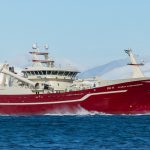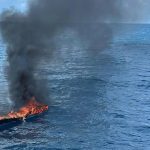The value of exports of pelagic species in 2010 reached a total of NOK 7.3 billion, with the volume of exports standing at 1.1 million tonnes. The value of exports of pelagic fish for human consumption has never before been as high as it was in 2010.
”Bigger quotas for all three pelagic species – herring, mackerel and capelin – combined with good demand in the major markets helped ensure these record export figures,” explains senior analyst Kristin Lien from the Norwegian Seafood Export Council.
”Japan’s major purchases of mackerel and Nigeria’s major purchases of herring at good prices are largely to thank for these highly satisfactory export figure,” says Lien.
Sizeable volume of mackerel consumed in Japan
In 2010, exports of frozen whole mackerel totalled NOK 2.8 billion, an increase of 38% compared to 2009. The volume of exports of frozen whole mackerel in 2010 totalled 265,000 tonnes, up 76,000 tonnes from the previous year. Japan is the biggest market for mackerel, with imports totalling 75,000 tonnes, followed by China with 51,000 tonnes. Much of the mackerel that is exported to China is re-exported to Japan after it has been filleted/marinated, which means that Japan consumes over half of all mackerel exports from Norway. Other large export markets for mackerel in 2010 were Turkey, Nigeria, Russia, South Korea and the Netherlands, each valued at over NOK 100 million.
The average price of frozen whole mackerel in 2010 was NOK 10.62, which is 1.6% down on the average price in 2009.
Russia remains biggest market for herring
In 2010, the value of exports of herring products to Russia totalled NOK 862 million, made up of 122,000 tonnes of frozen whole mackerel and 45,000 tonnes of frozen fillet products. For both product categories, this marks a reduction in exports to Russia in both value and volume.
The next biggest market in 2010 was Nigeria, which imported 129,000 tonnes of frozen whole herring from Norway valued at NOK 509 million, up 21% from the previous year.
Germany, with an export value of NOK 426 million, is now our third biggest market for herring. Exports of herring fillets to Germany have doubled in two years and in 2010 the volume of exports totalled 44,000 tonnes.
The value of exports to Ukraine, our fourth biggest market, in 2010 stood at NOK 379 million. This is a reduction of 38% compared to 2009.
The next biggest markets after Ukraine are the Netherlands, Poland, Denmark, Lithuania, Belarus and Sweden, each of which is valued at over NOK 100 million. Exports to Sweden and the Netherlands have increased, while the other markets have tended to decline.
Total exports of frozen whole herring in 2010 were down by 10.5% to 450,000 tonnes and exports of frozen fillet products showed a drop of 7.8% to 162,000 tonnes.
Comments Ingelill Jacobsen, marketing manager for herring, mackerel and capelin from the Norwegian Seafood Export Council: ”It is particularly pleasing to note the increase in exports of mackerel to Japan, as the Norwegian Seafood Export Council has significantly strengthened its budget for this market. Among the ”new” markets, we are paying particular attention to South Korea, Turkey and not least Norway. These are markets which in our opinion offer great potential and we shall be launching marketing activities in these countries aimed at increasing demand for Norwegian mackerel and herring.”
Less capelin for consumption
In 2010, the volume of exports of frozen whole capelin totalled 130,000 tonnes, down by 2,000 tonnes from the previous year. Russia was our biggest capelin market in 2010 at 44,000 tonnes, while exports to Ukraine totalled 36,000 tonnes and to Lithuania 12,000 tonnes. The Japanese market accounted for 14,000 tonnes of Norwegian capelin for human consumption and China imported 8,000 tonnes, most of which will be re-exported for consumption in Japan.








